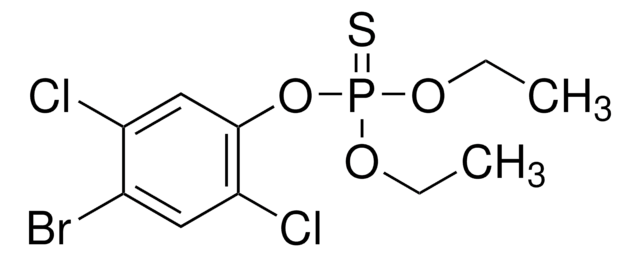PS100
Piperonylbutoxide
analytical standard
Synonym(s):
2-(2-Butoxyethoxy)ethyl (6-propylpiperonyl) ether, 4,5-Methylenedioxy-2-propylbenzyldiethyleneglycol butyl ether
About This Item
Recommended Products
grade
analytical standard
packaging
ampule of 100 mg
manufacturer/tradename
Chem Service, Inc. PS-100
technique(s)
HPLC: suitable
gas chromatography (GC): suitable
refractive index
n20/D 1.498 (lit.)
bp
155 °C/0.3 mmHg (lit.)
density
1.059 g/mL at 25 °C (lit.)
application(s)
agriculture
environmental
format
neat
SMILES string
CCCCOCCOCCOCc1cc2OCOc2cc1CCC
InChI
1S/C19H30O5/c1-3-5-7-20-8-9-21-10-11-22-14-17-13-19-18(23-15-24-19)12-16(17)6-4-2/h12-13H,3-11,14-15H2,1-2H3
InChI key
FIPWRIJSWJWJAI-UHFFFAOYSA-N
Looking for similar products? Visit Product Comparison Guide
Application
signalword
Warning
hcodes
Hazard Classifications
Aquatic Acute 1 - Aquatic Chronic 1 - Eye Irrit. 2 - STOT SE 3
target_organs
Respiratory system
supp_hazards
Storage Class
10 - Combustible liquids
wgk_germany
WGK 3
flash_point_f
339.8 °F - closed cup
flash_point_c
171 °C - closed cup
ppe
Eyeshields, Gloves
Choose from one of the most recent versions:
Certificates of Analysis (COA)
Sorry, we don't have COAs for this product available online at this time.
If you need assistance, please contact Customer Support.
Already Own This Product?
Find documentation for the products that you have recently purchased in the Document Library.
Our team of scientists has experience in all areas of research including Life Science, Material Science, Chemical Synthesis, Chromatography, Analytical and many others.
Contact Technical Service










